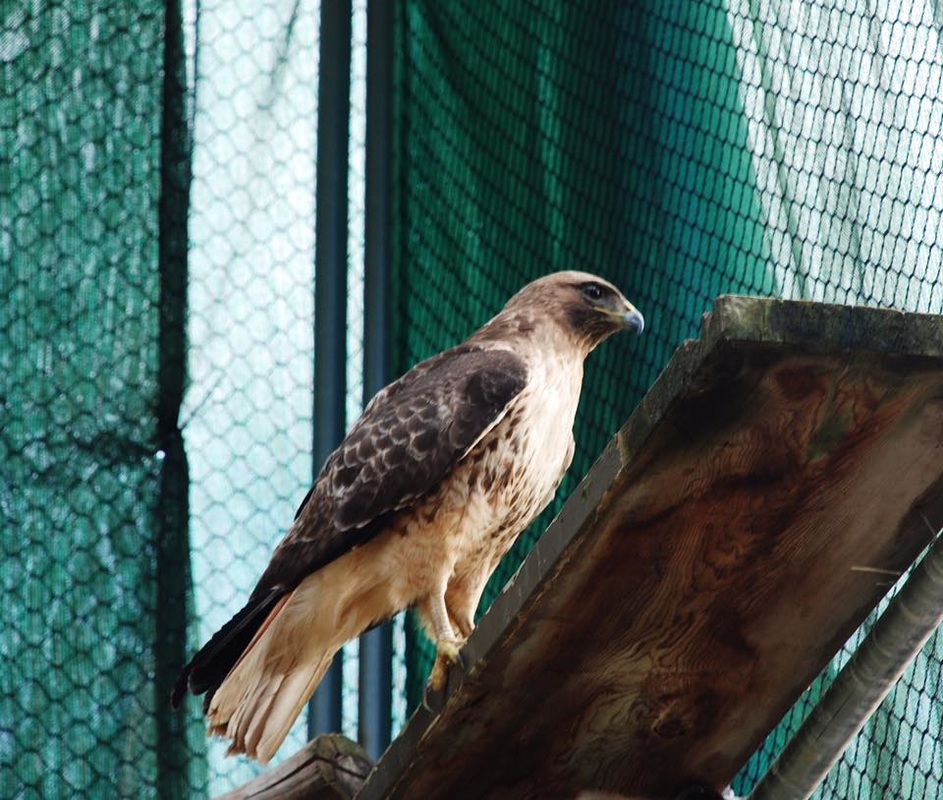|
White-Throated Swifts are aerial birds with long wings and short little legs.
It is this anatomy that gets them into trouble when they are on the ground. Their claws are powerful and they build their nests with saliva and materials they pick up in flight. Their populations are down, but they are not listed as a bird whose numbers are of concern. These birds catch insects as they fly and only very strong adults can get airborne from the ground. They are social birds and roost in groups of hundreds on cliffs, under overpasses and under bridges. Swifts are also one of the fastest flying birds with a top speed of 69 MPH. This bird came in because kind people believed it had run into something. Wildlife rehabilitators who know this bird want to get it back out into the wild as quickly as possible because they will not eat in captivity, spitting out food every time it is offered. With this bird,TCWC gave rehydrating fluids and called for a volunteer to come toss it back into the sky. This is a giant leap of faith and only done after careful examination reveals the bird is in good condition, wings are perfect and it is ready to go. A huge thanks to Peggy and her family who are always willing to hold their breath and push these beautiful swifts back into flight. When asked how this bird did, Peggy simply said, " it flew like an Eagle! ".
NORTHERN FLICKER FLIES AWAY
Tri County Wildlife Care has an amazing group of connected volunteers. On this date Pat got a call of a downed Hawk and because she was out of town, she called Susan to stabilize the bird until she got back into town. When the hawk got to the Feed Barn, the kind people filled out paperwork and made a donation. The Feed Barn employee, Rebecca, informed the concerned people that this bird was not a hawk. This bird was a gorgeous Northern Flicker, which is a medium sized woodpecker. These beauties are high stress birds and do not do well in captivity for any period of time. The favorite meal of Northern Flickers is ants and it can comprise nearly half of their diet. These birds are cavity dwellers and they bore holes into trees to make their nests. The males have a bright red mustache which the females lack. Even without the bright red marking of the male, both sexes of these birds are spectacularly beautiful. If you see a flash of orange, you are probably seeing the underside of a Flicker's wings. This bird was found at the side of the road. TCWC rehabilitators perform examination upon intake of their wildlife patients and this bird was found to be healthy and free of any visible injuries. This high stress bird can appear to be near death simply because it reacts by shutting down and lying down. Once it was determined that this bird was simply stunned and stressed, TCWC volunteers took it to a nearby tree and set it in a Y in a branch and prepared to wait. The greatest gift was to watch after about 30 minutes to see the bright flash of orange as this Northern Flicker took flight off into the trees. For more information about Tri County Wildlife Care, please visit www.pawspartners.org
This beautiful female Red Tailed Hawk was hit by a car and a Falconer and one of our wildlife rehabilitators saw it and stopped to pick her up. They thought she had a wing injury, but Pat discovered she has a leg injury. She is flying well and improving on landing, more soon...
|
Archives
April 2024
Welcome!PawsPartners.org is an alliance formed between A-PAL Humane Society of Amador County and Tri County Wildlife Care, the latter serving native wildlife in Amador, Calaveras, and Eastern San Joaquin Counties. Since inception we have added the Shelter Partners volunteer group, who support our local Animal Control organization, and Amador County Animal Response Team (ACART). Categories
All
|








 RSS Feed
RSS Feed

